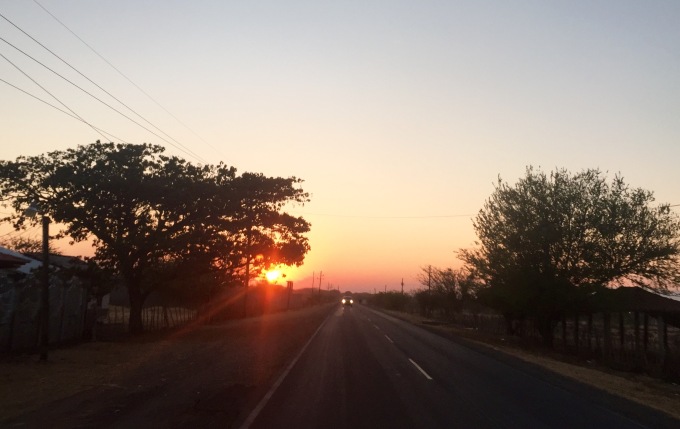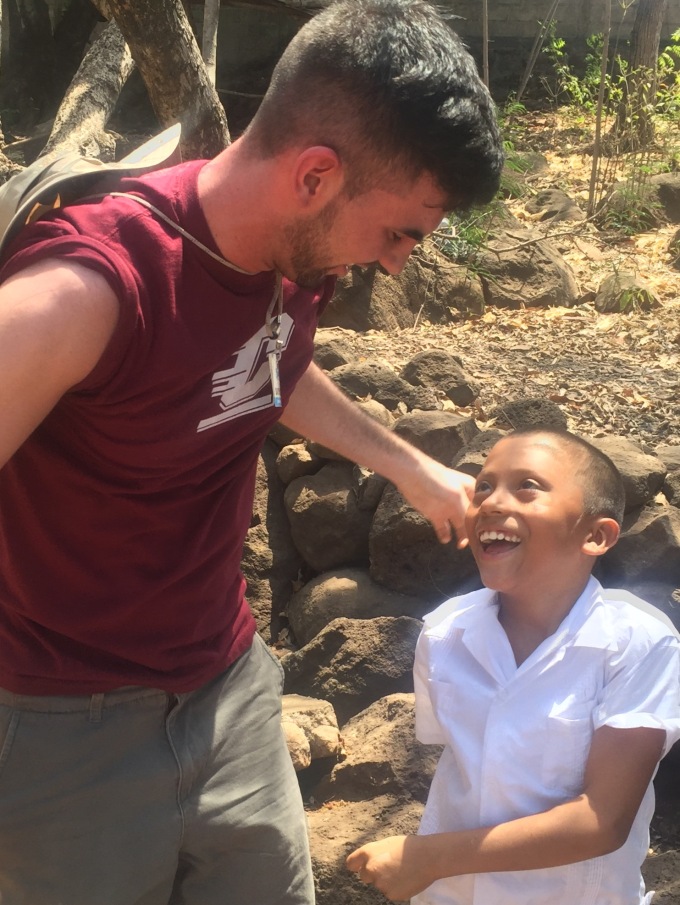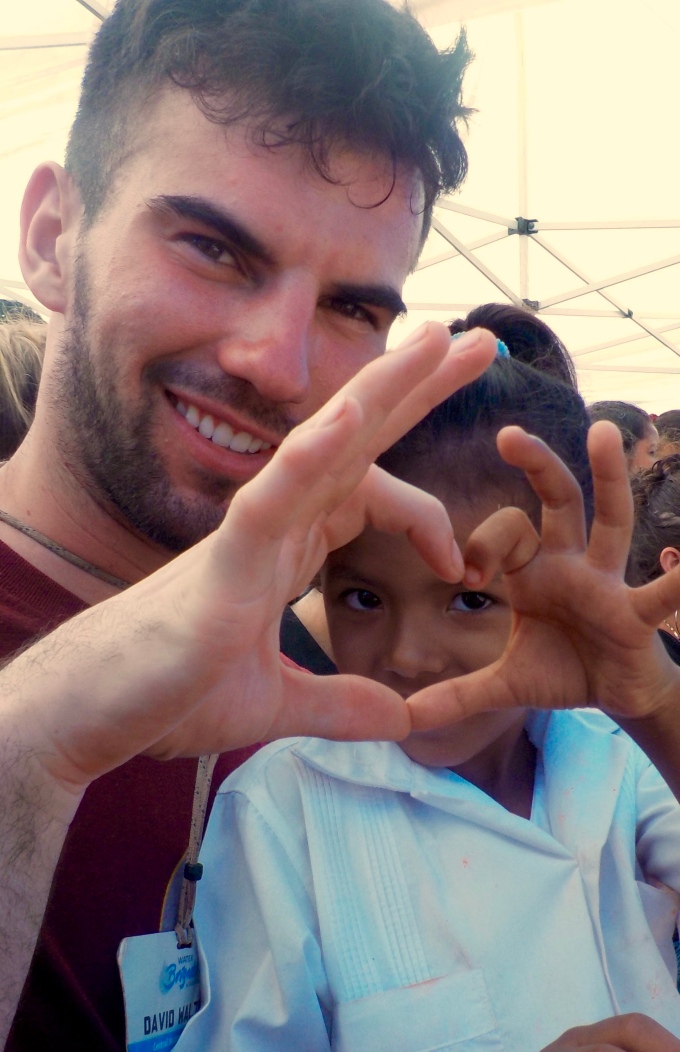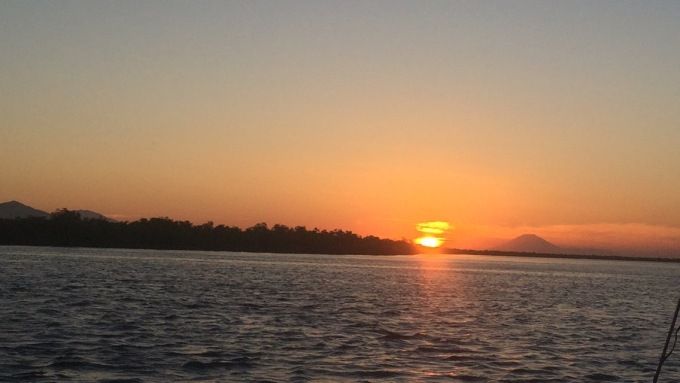It’s hot: 107 degrees Fahrenheit. Yesterday I was walking to class in a winter coat, mind you. I’ve been swinging this pick-axe into the ground for the past 3 hours. It had been about an hour since it was pointed out to me that I was standing over a scorpion, but I was still on the lookout for more. I looked up the hill at the rest of our group as they continued to carve a narrow and deep path through the earth. There are thirteen of us plus the staff and community members; we’re all drenched in our own sweat, but no one is too tired yet. This is just before lunch on the first day of work on the Los Hautales water project in Honduras.
Pause; Rewind:
I heard about Global Brigades when two of the students who participated in the previous year’s trip came to one of my classes recruiting for the upcoming trip. I remember them mentioning that it was a combination of service and application of knowledge, which peaked my interest severely.
After some serious fundraising, a handful of planning meetings, and an entire semester’s span of time, I found myself gripping onto my first ever international plane ticket as three of us carpooled the night before to make it to the airport on time. I was in disbelief, and a fog, because it was 5am when we got to the airport. I was kind of singing in my head out of excitement; In a few hours, I will be Central America to help install a new pump-style water system for a community that needs it. For the most part, I slept at Bristol, the airport in Flint, Michigan.
We stepped off our second plane in Tegucigalpa, the capital of Honduras. We were immediately escorted into a white van with the Global Brigades logo on the side. We drove on highway road for about two more hours; the views were incredible. Honduras is incredibly mountainous. There were times we drove near the edges of cliffs. Off in the distance were little houses, often without doors in the doorway, clumped close together. Wild dogs trot along the sides of dirt roads, so close to traffic it was concerning.
We unloaded our things and at lunch at our stay, the Horizon, and met our group’s GB staff. We then drove to Los Hautales, which was about an hour away, to meet the Water Committee f the town and introduce ourselves. The Water Committee is a group of the community leaders that come together to communicate and work directly with GB. Each community that applies for Global Brigade aid must form one of these bodies in order to work along with the organization and to learn about the system. The Water Committee must remain assembled for some time even after completion of a project, and continue to communicate with GB to report that their system is being maintained properly. It was an honor meeting with the Committee in Los Hautales, and I found learning more about how GB supports its communities to be a valuable piece of knowledge.
The following days were physically challenging. We spent two days in the Honduran heat digging out a trench and a third-day installing piping for the water system. Once complete, this system will provide safe drinking water directly to the homes of about 200 families. This will replace their past model for attaining water, which meant carrying heavy buckets through mountain roads for miles and miles, each day.


When we weren’t digging trenches, we got to network and collaborate with other students on our compound. Groups came from Georgetown, Penn State, Carnegie Melon, and Virginia University. Meeting these wildly passionate students and sharing our experiences was such a unique opportunity which introduced me to some of the most talented students I’ve ever met in my lifetime. I was mostly grateful to connect with the students from Central, none of whom I had known before this trip.
To help the community of Los Hautales better understand and sustain their water system, each water brigade put together a presentation for the children of the community. Ours explained the water system from start to finish, showing where the water comes from, how it gets to a sanitation tank, and then how it travels through the pipes into the homes of the communities.
Before this water system, these people literally have had to walk miles and miles of rocky mountain path to a bacteria-ridden water source to fill buckets which they would carry home with them. It blows my mind that this is how they lived. And it fills me with complete satisfaction to know that soon they will never have to do that again. The adults in the community are dedicated to bringing this vision alive, as they truly never want to hand their child a bucket and ask them to go on a journey to fill it with water. This will a be reality soon, and water will come pouring out of a faucet on in their individual homes.

For the remaining three days, we operated as an engineering brigade. We set the axes down and worked for two days with two different communities. We first assessed their existing water systems. What they had was built by another organization ten years ago, but it wasn’t done so properly and now the community is suffering again. They reached out to Global Brigades and we met with their leadership to build a “community profile” (including information on their education system, their businesses, population, and more). From there, we went to the location of the water source, assessed the flow rate of water from the source, performed a water safety test at the tank, and gathered basic observations of the system as a whole. We compiled all of the data into a report that will be presented to Global Brigades and will determine whether or not this community will receive further aid. My fingers are crossed for them, because currently, their pump flows water at about 1.5 Horse Power, and the water only comes through every 11 days. They store their water in “Pilas” which are large cement water basins.
On the last day, we visited a community that had a water system completed by GB almost a year ago prior. We walked around the community from home-to-home, speaking with the residence. They shared with us their relief, now that water came through pipes and into their homes. We were guided up a mountain and through some woods, where they showed us their water source and how it operates.
I remember one of the women greeting us into her home excitedly. She told us we were a gift from God. She explained to us the struggles of being a mom in a community where her children’s lives were always at risk because of the water available. She risked everything to keep her kids alive, which meant sending them to the city where she knew they would survive. Now that there is water in the community, her son has moved back home and her family is now reunited.
Yeah, I’m never going to forget that.

Of course, packing up the night before leaving The Horizon was emotional for me. I didn’t want to leave. I was overwhelmed by what I had experienced. I was inspired. Driving through the mountains back to Tegucigalpa was long and quiet. All of us had expected to be affected by our service; none of us, however, could have ever anticipated it would affect us this deeply.
Water is a right.
In the fifteen minutes it takes for you to take a shower, fill a glass of water, and flush your toilet, it would take these communities an entire day. It would require walking up and down rocky mountain roads in brutal sun. It would mean needing the right weather conditions and waking up extra early to go fill a bucket. It would need a secure place to store it.
Even now, the access to clean water is limited. Each of these homes is given one faucet; how many faucets are in your home? I do not mean to guilt you, but I urge you to realize that even one faucet completely changed these people’s day-to-day lives. I imagine many of you reading this might be very much like me before I left for this trip. I knew that there were communities out there that lived without roofs over their heads, nor operating water systems, but I never admitted to myself how hard a life like that could be. Once I was talking to the water committee, I had to own this reality. Once I met these people and worked alongside them, I could not ignore how evident it was that they knew this system would change their lives. I could see it on their faces and hear it in the translations; water is life.
Thank you, Honduras, for showing me all of this. Thank you GB for giving me the opportunity to help bring clean, usable water into the homes of those in Los Hautales. Thank you to everyone who helped me fundraise for the cost of this service; because of you all, my life is changed.
To live your life without acknowledging that every single thing you do has a global impact is incredibly dangerous: This world has become too small for us to ignore the needs of those who don’t look like us, act like us, or speak our languages. Your every action transcends these barriers; so strive to do some good in everything that you do.

